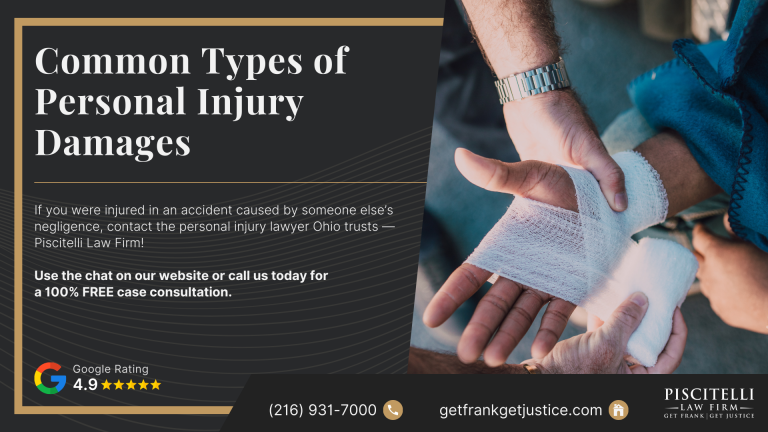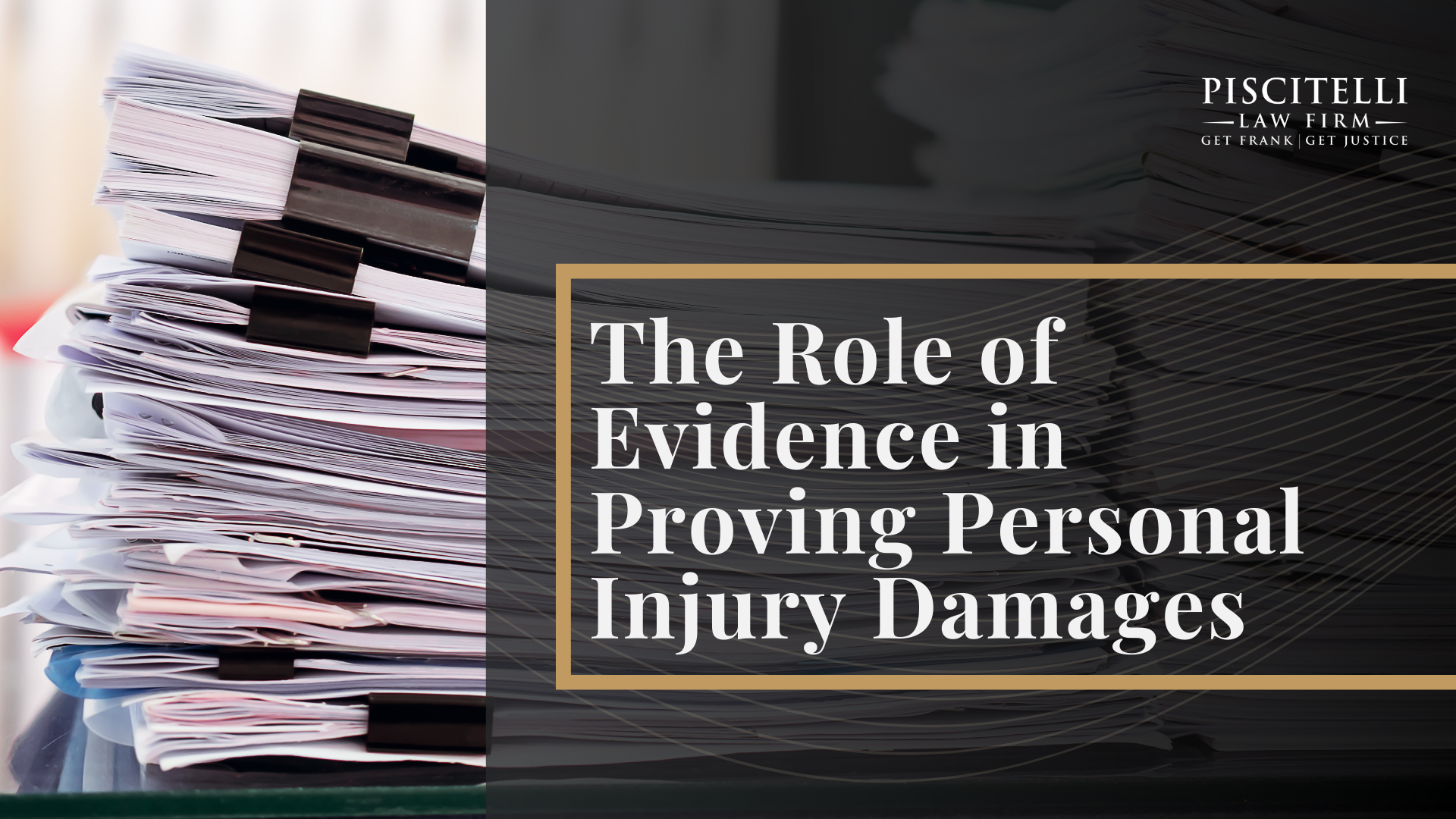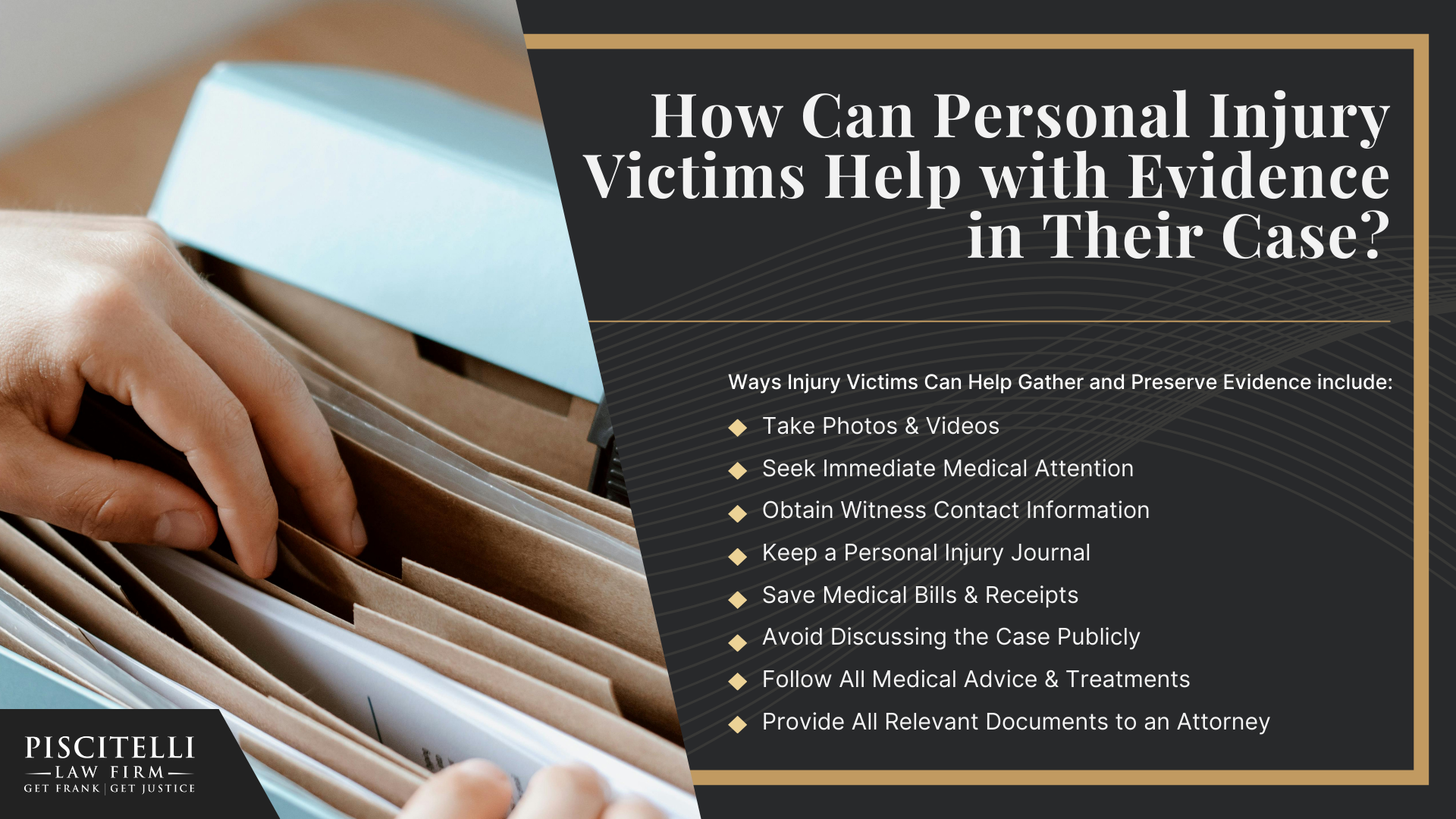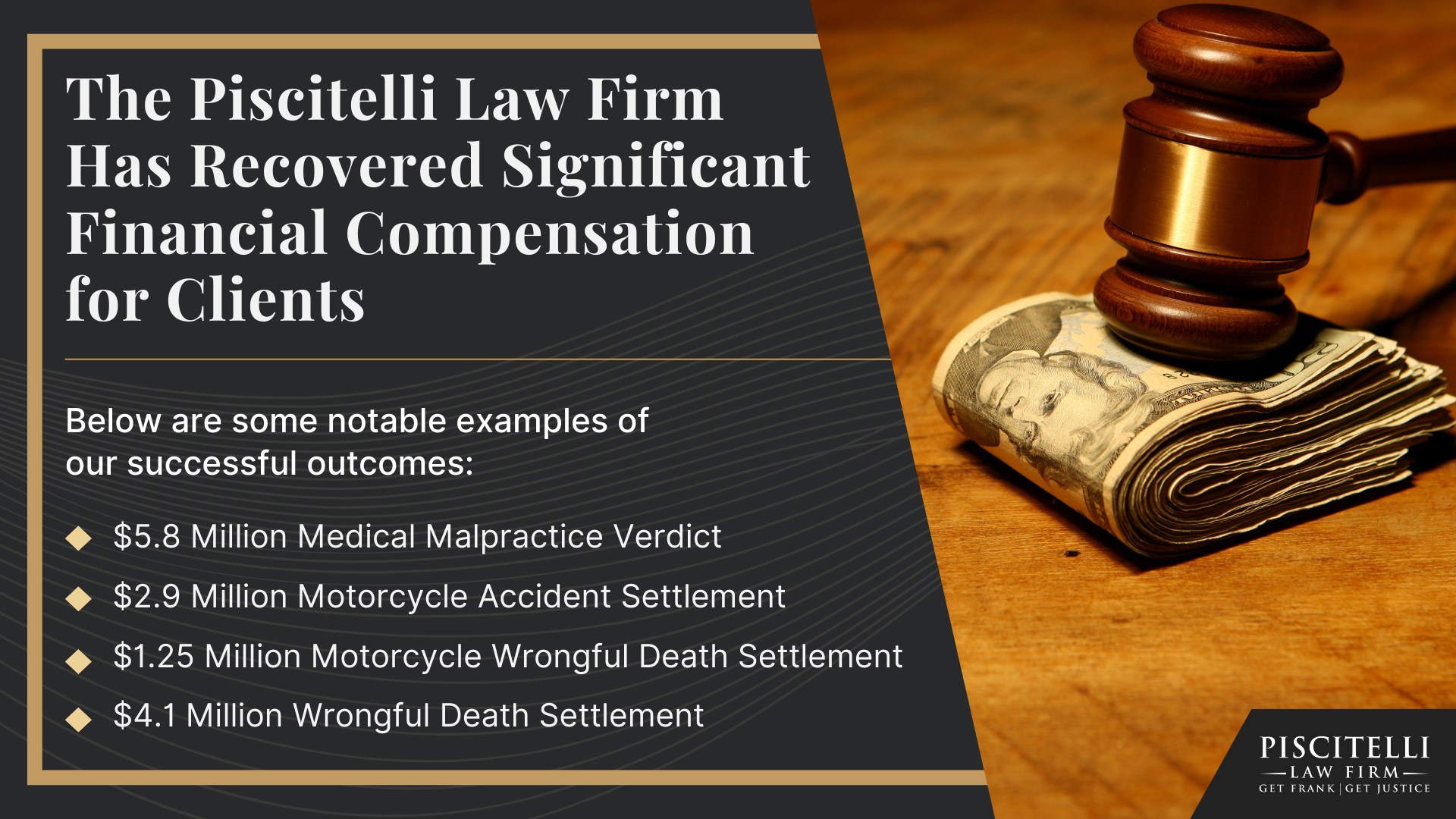When an injured party suffers harm due to another person’s negligence in Ohio, they have the right to seek compensation for their losses.
Most personal injury claims involve damages that cover both direct financial costs and the personal impact of an accident.
These damages fall into two main categories: compensatory damages, which reimburse victims for their losses, and punitive damages, which are awarded in rare cases of extreme negligence or misconduct.
Compensatory damages are divided into two types: economic losses and non-economic losses.
Economic losses include expenses related to medical treatment, lost wages, and property damage.
For example, an injured party in Ohio may need compensation for serious injuries requiring ongoing medical care, surgeries, or physical therapy.
These costs, along with lost income from time off work, can be recovered through a personal injury claim.
Non-economic damages compensate victims for the physical and emotional toll of their injuries, such as pain and suffering, mental anguish, or reduced quality of life.
Ohio law places a cap on non-economic damages in most personal injury claims, limiting recovery to $250,000 or three times the amount of economic losses, with a maximum of $350,000 per plaintiff ($500,000 per occurrence in multi-victim cases).
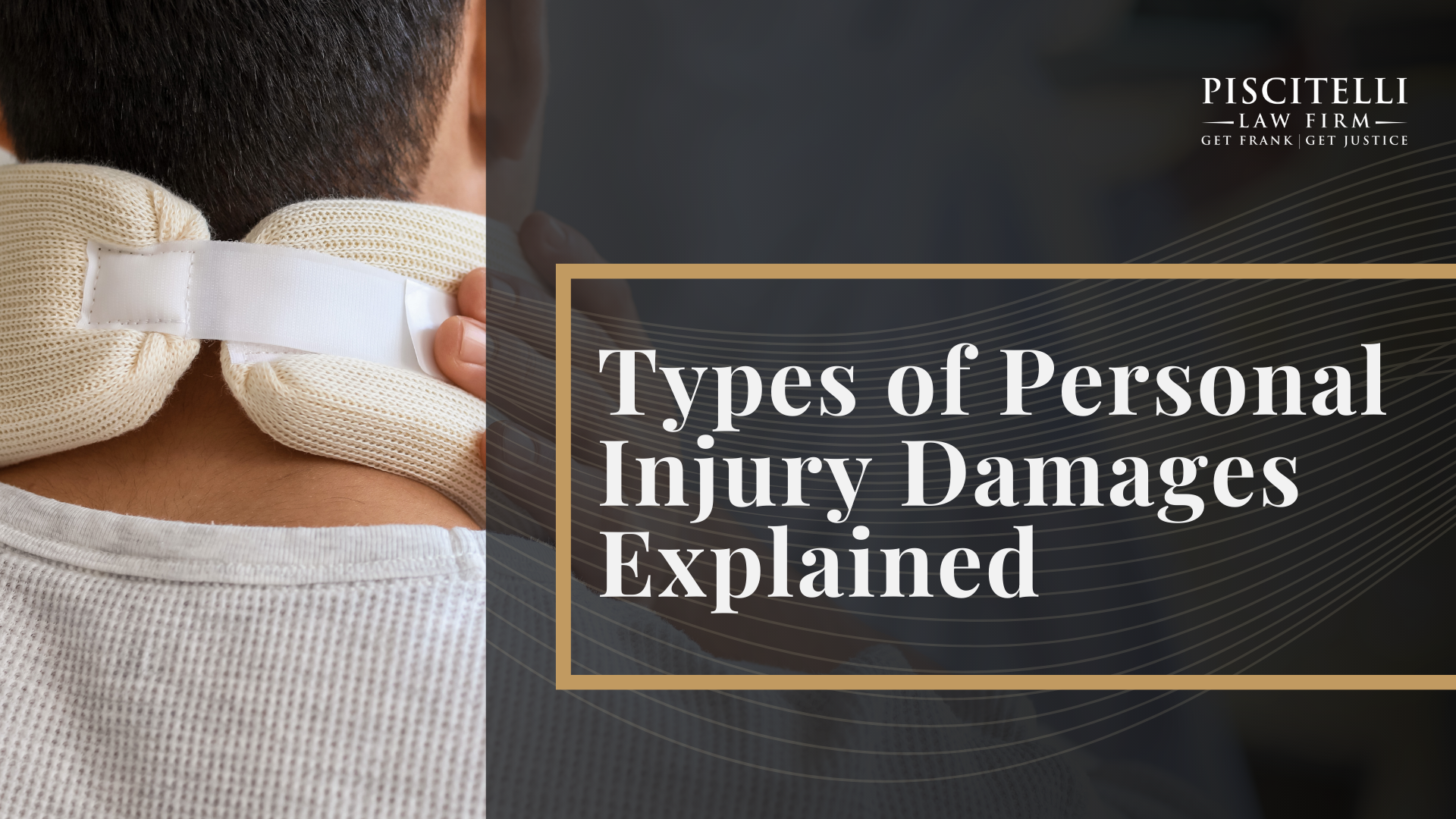
However, in cases involving serious injuries such as permanent disfigurement or loss of a limb, these limits do not apply.
For injury victims in Ohio, knowing what damages they can claim is critical to recovering fair compensation.
An experienced personal injury attorney can assess the full impact of an accident and fight for the maximum amount allowed under Ohio law.
Economic Damages: The Tangible Financial Losses
Economic damages cover the monetary compensation awarded to an injured party for measurable financial losses caused by an accident.
These damages include out-of-pocket expenses such as transportation to medical appointments, medical devices, and home modifications needed due to a disability.
Rehabilitation costs can be significant, especially for those requiring long-term physical therapy or specialized treatments.
In cases where a victim suffers permanent injuries, future medical expenses may include ongoing doctor visits, assistive care, or necessary surgeries.
If an injury affects a person’s ability to work, they may also be entitled to lost future earnings, which account for reduced earning potential due to long-term disabilities.
Seeking to recover damages for these financial losses is essential for injury victims to avoid overwhelming debt and maintain financial stability.

Examples of Economic Damages:
- Medical expenses – Hospital stays, surgeries, doctor visits, prescription medications
- Future medical expenses – Long-term treatment, home healthcare, assistive medical devices
- Rehabilitation costs – Physical therapy, occupational therapy, counseling for psychological injuries
- Lost wages – Income lost due to time away from work during recovery
- Lost future earnings – Reduced earning capacity due to a long-term or permanent disability
- Property damage – Vehicle repairs, replacement of personal belongings damaged in the accident
- Out-of-pocket expenses – Transportation costs, home modifications, medical equipment such as wheelchairs
Non-Economic Damages: The Intangible Costs of an Injury
Not all losses from an accident have a clear monetary value, but they can still have a profound impact on an injured party’s life.
Pain and suffering damages compensate for the physical pain, emotional distress, and loss of enjoyment of life caused by a serious injury.
Unlike economic damages, which cover expenses incurred like medical bills and lost wages, non-economic damages address the personal toll of an accident.
These damages can vary significantly based on the severity of the injury, how it affects daily life, and whether the victim experiences long-term complications.
In Ohio, non-economic damages are capped at $250,000 or three times the total economic losses, up to $350,000 per plaintiff.
However, cases involving permanent or catastrophic injuries—such as paralysis or amputation—are not subject to these limits.
Calculating pain and suffering damages often requires expert testimony, medical evaluations, and evidence of how the injury has changed the victim’s life.
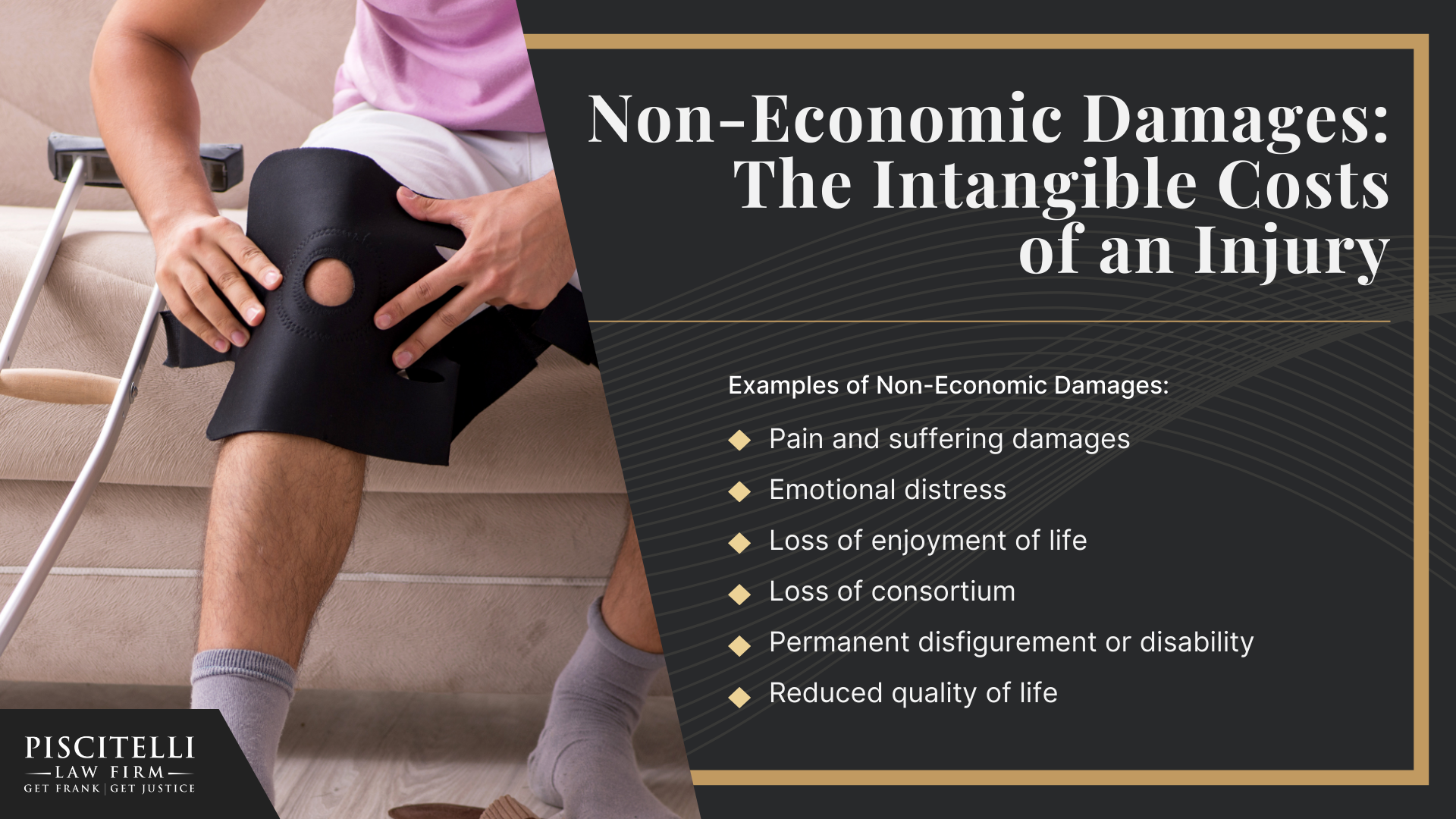
Examples of Non-Economic Damages:
- Pain and suffering damages – Compensation for physical pain, chronic conditions, and ongoing discomfort
- Emotional distress – Anxiety, depression, PTSD, or psychological trauma caused by the accident
- Loss of enjoyment of life – Inability to participate in hobbies, sports, or daily activities due to injury
- Loss of consortium – Impact of the injury on relationships, including loss of companionship or intimacy
- Permanent disfigurement or disability – Scarring, amputation, paralysis, or other long-term impairments
- Reduced quality of life – General loss of independence, mobility, or ability to perform routine tasks
Punitive Damages: When Are They Awarded?
Punitive damages are a unique form of compensation awarded in certain personal injury law cases where the defendant’s conduct goes beyond ordinary negligence.
Unlike compensatory damages, which reimburse an accident victim for their losses, punitive damages serve to punish the responsible party and deter future negligence.
Ohio law allows courts to award punitive damages when a defendant is found guilty of gross negligence or intentional misconduct, meaning they acted with extreme disregard for others’ safety.
For example, if a driver in a car accident was excessively speeding while intoxicated, a jury may find their behavior reckless enough to justify punitive damages.
These damages hold the responsible party accountable and send a message that such actions will not be tolerated.
Under Ohio law, punitive damages are capped at twice the amount of compensatory damages awarded, or at 10% of the defendant’s net worth, up to a maximum of $350,000 per plaintiff.
However, in cases involving intentional misconduct, such as assault or fraud, these caps do not apply.
While punitive damages are not awarded in every case, they can be critical in cases where extreme recklessness or deliberate harm caused severe injury.


